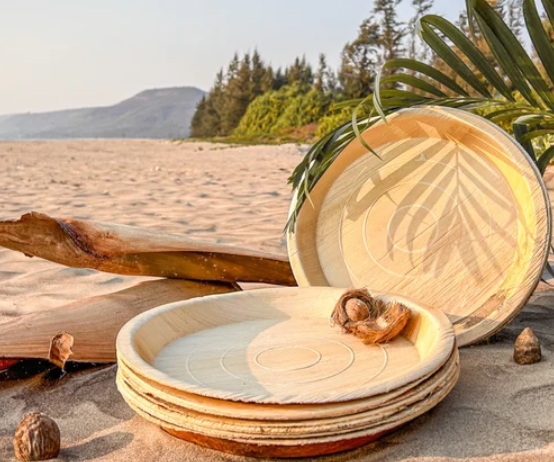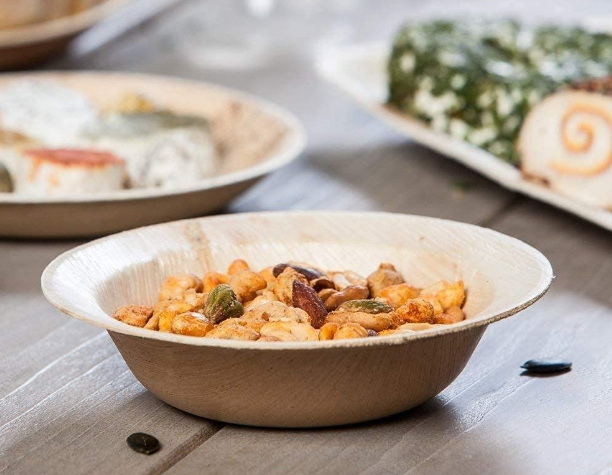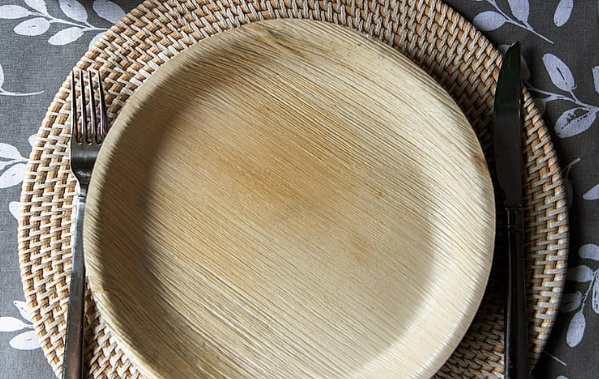
Content Menu
● Types of Disposable Paper Products for Parties
>> Paper Plates
>> Paper Bowls and Cups
>> Other Disposable Paper Products
● Paper Plates vs. Plastic Plates
● Paper Plates vs. Foam Plates
● Paper Plates vs. Compostable and Biodegradable Plates
● Paper Plates vs. Other Paper-Based Tableware
● Key Considerations When Choosing Disposable Tableware
>> Convenience and Portability
>> Cost and Budget
>> Hygiene and Food Safety
>> Environmental Impact
>> Aesthetics and Customization
● Best Use Cases for Each Type
● Conclusion
● FAQ
>> 1. Are paper plates more eco-friendly than plastic plates?
>> 2. Can all paper plates be recycled or composted?
>> 3. What are the main disadvantages of using paper plates for parties?
>> 4. How do paper plates compare in cost to other disposable tableware?
>> 5. Are there alternatives to paper plates that are both durable and eco-friendly?
● Citations:
Hosting a party involves countless decisions, from the menu to the decorations—and tableware is no exception. Disposable paper plates and other paper products offer unmatched convenience, but how do they compare to alternatives like plastic, foam, or compostable plates? This article delves into the pros and cons of each option, with a focus on how paper plates measure up for party settings.

Types of Disposable Paper Products for Parties
Paper Plates
Paper plates are made from food-grade paper or cardboard, often with a thin coating of wax or polyethylene for moisture resistance. They are lightweight, affordable, and available in a wide range of sizes, shapes, and designs, making them a go-to choice for casual and formal events alike[1][8][9].
Key Features:
- Lightweight and easy to transport
- Available in coated (for wet/greasy foods) and uncoated (for dry foods) varieties
- Can be compostable or recyclable, depending on the coating and materials[8][9]
- Suitable for both everyday use and special occasions
Paper Bowls and Cups
Like paper plates, disposable paper bowls and cups are designed for single use. They are typically used for serving soups, desserts, or beverages at parties. These products share many of the same benefits as paper plates, including convenience, hygiene, and potential for customization[11].
Other Disposable Paper Products
Other paper-based products include:
- Paper napkins
- Paper cutlery (though less common than plastic or bamboo)
- Paper straws
- Paper food trays
These items complement paper plates and help create a cohesive, disposable table setting for parties.
Paper Plates vs. Plastic Plates
| Feature | Paper Plates | Plastic Plates |
| Material | Paper/cardboard, sometimes coated | Polystyrene, polypropylene, etc. |
| Durability | Moderate (coated for extra strength) | High, especially for hot/greasy foods |
| Eco-friendliness | Biodegradable/compostable (uncoated) | Non-biodegradable, recyclable (rarely) |
| Cost | Slightly higher per unit than plastic | Generally cheaper per unit |
| Aesthetics | Wide range of designs, eco look | Can mimic china, but less eco appeal |
| Best Use | Casual, eco-conscious events | Outdoor, liquid-heavy, hot foods |
Summary: Paper plates are more sustainable and preferred by eco-conscious consumers, while plastic plates offer greater durability and are better for very hot or greasy foods[2][7].
Paper Plates vs. Foam Plates
| Feature | Paper Plates | Foam Plates |
| Material | Paper/cardboard | Expanded polystyrene (EPS) |
| Durability | Moderate | High, excellent insulation |
| Eco-friendliness | Compostable/recyclable (some types) | Non-biodegradable, landfill burden |
| Cost | Affordable | Usually cheapest option |
| Aesthetics | Many designs, eco look | Basic, less attractive |
| Best Use | General parties, eco events | Large portions, outdoor events |
Summary: Foam plates are being phased out in many regions due to environmental concerns, making paper plates a more responsible choice for most parties[1].

Paper Plates vs. Compostable and Biodegradable Plates
| Feature | Paper Plates | Compostable/Biodegradable Plates |
| Material | Paper/cardboard, sometimes coated | Bamboo, sugarcane, palm leaf, etc. |
| Durability | Good (especially coated/heavy-duty) | Excellent, sturdy, moisture-resistant |
| Eco-friendliness | Good (if uncoated or compostable) | Excellent, fully biodegradable |
| Cost | Moderate | Highest per unit |
| Aesthetics | Wide range of designs | Natural, elegant appearance |
| Best Use | Most parties, casual to semi-formal | Upscale, eco-conscious, formal events |
Summary: Compostable plates made from bamboo or sugarcane are the most sustainable but come at a higher cost. Paper plates offer a balance between affordability and eco-friendliness[1][2][7][10].
Paper Plates vs. Other Paper-Based Tableware
Paper plates are often compared to other disposable paper products such as bowls, cups, and trays. While each serves a specific function, paper plates remain the most versatile for serving main dishes at parties. Bowls and cups are essential for soups, desserts, and drinks, but lack the surface area and rigidity needed for full meals.
Key Considerations When Choosing Disposable Tableware
Convenience and Portability
- Paper plates are lightweight and easy to transport, making them ideal for outdoor events, picnics, and large gatherings[1][4][11].
- They eliminate the need for dishwashing, saving time and effort during cleanup[4][12].
- Other paper products (cups, napkins) offer similar convenience, but plates are the central piece for serving food.
Cost and Budget
- Paper plates are affordable and available in bulk, making them cost-effective for large parties[1][4][5].
- Plastic and foam plates may be cheaper per unit, but paper plates offer better sustainability value in the long run[2][5].
- Compostable and biodegradable plates are pricier but appeal to eco-conscious hosts[5][10].
Hygiene and Food Safety
- Disposable paper plates and products are single-use, reducing the risk of cross-contamination and ensuring each guest receives a clean item[1][11].
- This is especially important for large gatherings or events with children and elderly guests.
Environmental Impact
- Paper plates (especially uncoated or compostable types) are more sustainable than plastic or foam plates[2][7][10].
- However, coated paper plates may not be recyclable or compostable in all areas, and their production can contribute to deforestation and pollution if not sourced responsibly[6][14].
- Compostable plates made from bamboo or sugarcane offer the lowest environmental footprint but at a higher cost[10][13].
- Proper disposal is essential: food contamination and coatings can hinder recycling of paper plates[6][14].
Aesthetics and Customization
- Paper plates come in a wide variety of colors, patterns, and sizes, allowing for easy matching with party themes and decorations[1][9][12].
- Custom printing is available for branding or personalized events[11].
Best Use Cases for Each Type
| Tableware Type | Best Use Cases |
| Paper Plates | Birthdays, picnics, casual parties, eco-focused events |
| Plastic Plates | Outdoor barbecues, events with hot/greasy foods |
| Foam Plates | Large, informal gatherings needing insulation |
| Compostable/Biodegradable Plates | Weddings, upscale events, zero-waste parties |
| Paper Bowls/Cups | Soups, desserts, beverages |
| Paper Trays | Food stalls, buffets, fast service at large events |
Conclusion
Paper plates remain one of the most popular disposable tableware choices for parties due to their balance of convenience, cost, and environmental friendliness—especially when compared to plastic or foam plates. While not without their drawbacks (such as potential recyclability issues and environmental concerns if improperly sourced or disposed of), paper plates offer significant benefits for hosts seeking quick cleanup, hygiene, and versatility.
For those prioritizing sustainability, compostable or uncoated paper plates are the best option, while plastic or foam plates may be reserved for situations requiring extra durability. Ultimately, the best choice depends on your event's needs, your budget, and your environmental priorities.

FAQ
1. Are paper plates more eco-friendly than plastic plates?
Yes, paper plates are generally more eco-friendly than plastic plates, especially if they are uncoated or compostable. They are made from renewable resources and decompose faster, reducing their environmental impact[2][7][16].
2. Can all paper plates be recycled or composted?
Not all paper plates are recyclable or compostable. Uncoated paper plates can often be composted, but those with plastic or wax coatings may not be accepted in recycling or composting programs. Always check local guidelines[6][9][14].
3. What are the main disadvantages of using paper plates for parties?
The main disadvantages include limited durability (especially for heavy or greasy foods), potential environmental concerns if not disposed of properly, and recurring costs for frequent events[4][14].
4. How do paper plates compare in cost to other disposable tableware?
Paper plates are generally affordable and cost-effective for large gatherings. Plastic and foam plates may be cheaper per unit, but paper plates offer better sustainability value. Compostable plates are the most expensive option[1][2][5].
5. Are there alternatives to paper plates that are both durable and eco-friendly?
Yes, compostable plates made from bamboo, sugarcane, or palm leaves offer both durability and excellent sustainability. They are suitable for upscale or eco-conscious events but are typically more expensive than standard paper plates[1][7][10].
Citations:
[1] https://eventableware.com/a-complete-guide-disposable-plates/
[2] https://ambican.com/comparing-materials-which-paper-plates-are-most-sustainable/
[3] https://www.kviconline.gov.in/pmegp/pmegpweb/docs/commonprojectprofile/DisposablePlatesDona.pdf
[4] https://smartyhadaparty.com/blogs/home/paper-plates-vs-washing-dishes
[5] https://www.businessresearchinsights.com/market-reports/disposable-paper-plates-market-121939
[6] https://www.hydepackage.com/info-detail/health-concerns-with-disposable-paper-plate-usage
[7] https://droppe.com/blog/article/how-to-choose-the-best-material-for-disposable-plates-paper-plastic-or-compostable/
[8] https://www.kimecopak.ca/blogs/news/disposable-paper-plate-buying-guide
[9] https://www.lusini.com/en/category/take-away/disposable-products/disposable-plates/paper-plates/
[10] https://www.bambuhome.com/blogs/bambuliving/compostable-vs-disposable-plates
[11] https://babacups.com/the-benefits-of-using-disposable-paper-products-in-the-fb/
[12] https://www.thekayacollection.com/blogs/news/why-use-disposable-plates-convenience-benefits-tips-for-choosing-the-best-ones
[13] https://www.mviecopack.com/news/are-disposable-plates-essential-for-parties/
[14] https://www.greenwashingindex.com/eco-friendly-or-silent-polluter/
[15] https://diyecobox.com/perfect-guide-to-disposable-plate-sizes/
[16] https://rosenpack.com/uncategorized/plastic-vs-paper-plates-and-cups-whats-the-difference/
[17] https://www.bambuhome.com/blogs/bambuliving/compostable-vs-disposable-plates
[18] https://smartyhadaparty.com/blogs/home/how-to-choose-between-paper-and-plastic-dinnerware
[19] https://droppe.com/blog/article/how-to-choose-the-best-material-for-disposable-plates-paper-plastic-or-compostable/
[20] https://www.anchenggy.com/blog/must-have-disposable-partyware.html
[21] https://www.anchenggy.com/blog/best-party-disposable-plates.html
[22] https://diyecobox.com/health-risks-of-paper-plates-what-to-know/
[23] https://www.reddit.com/r/AskAnAmerican/comments/146todt/whats_the_reason_for_paper_plates_being_used/
[24] https://www.sumkoka.com/disposable-plate-size-guide.html
[25] https://www.kimecopak.ca/blogs/news/types-of-disposable-plates
[26] https://diyecobox.com/health-risks-of-paper-plates/
[27] https://www.anchenggy.com/blog/washable-vs-disposable-dishes.html

















